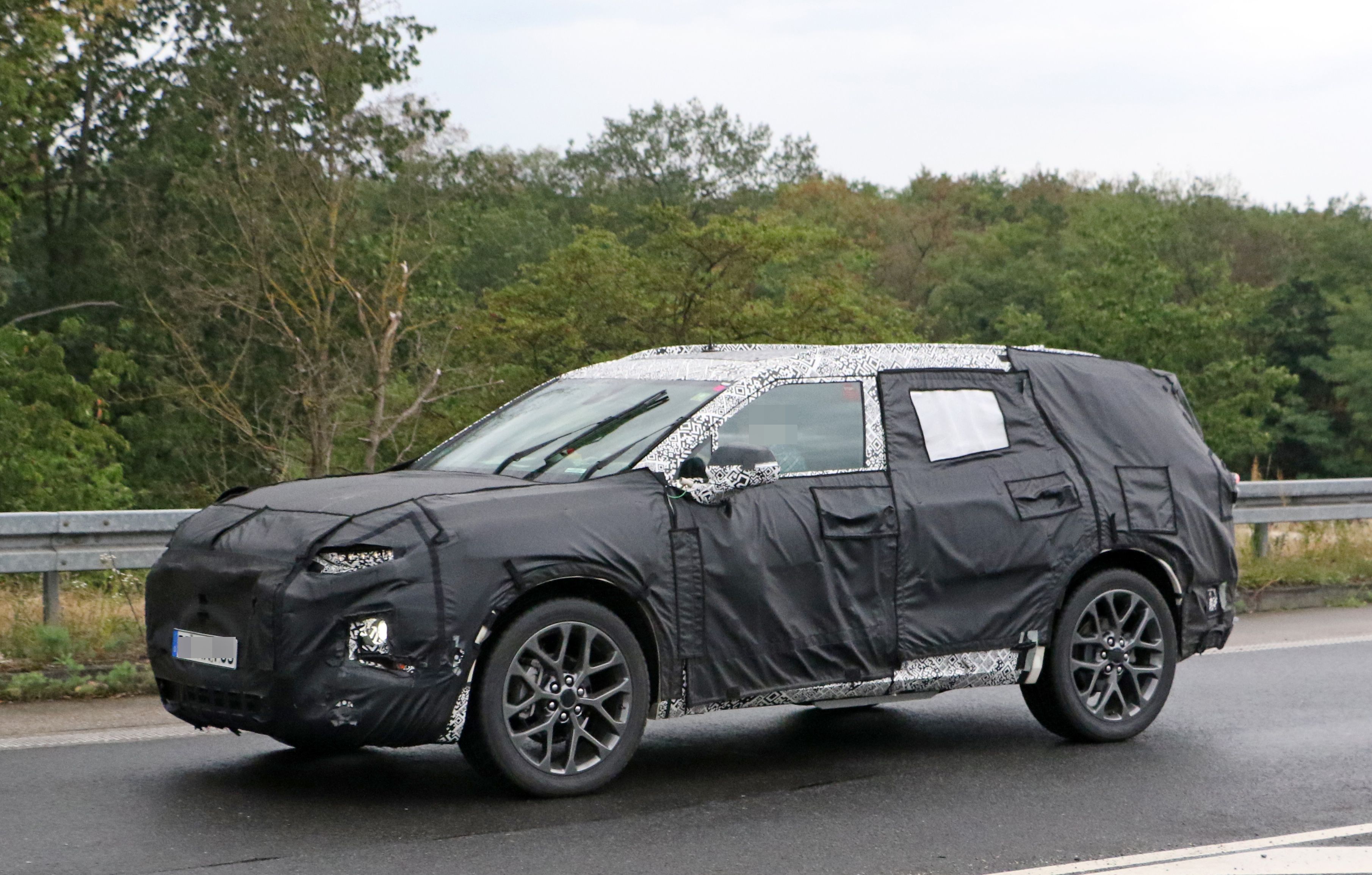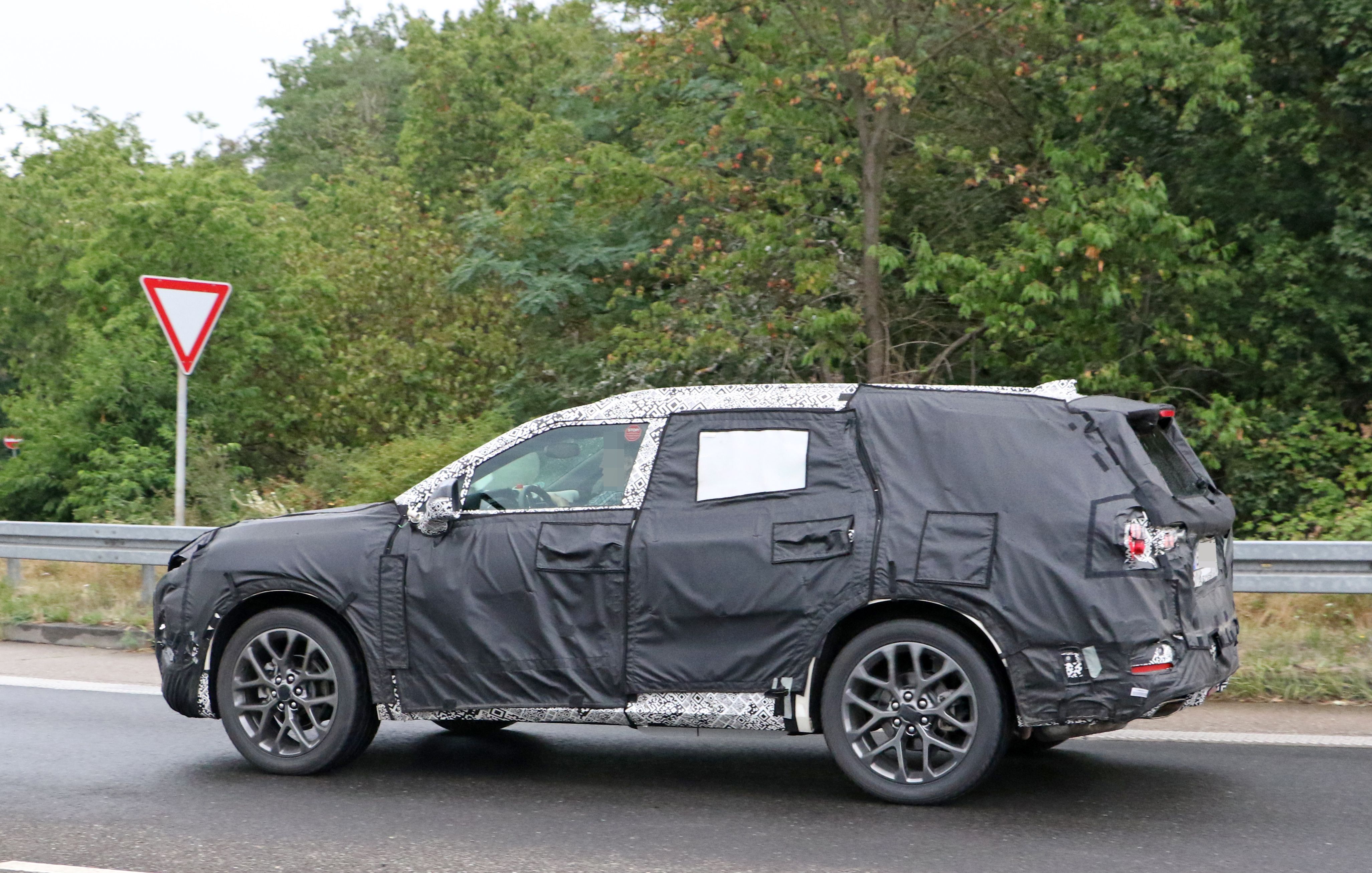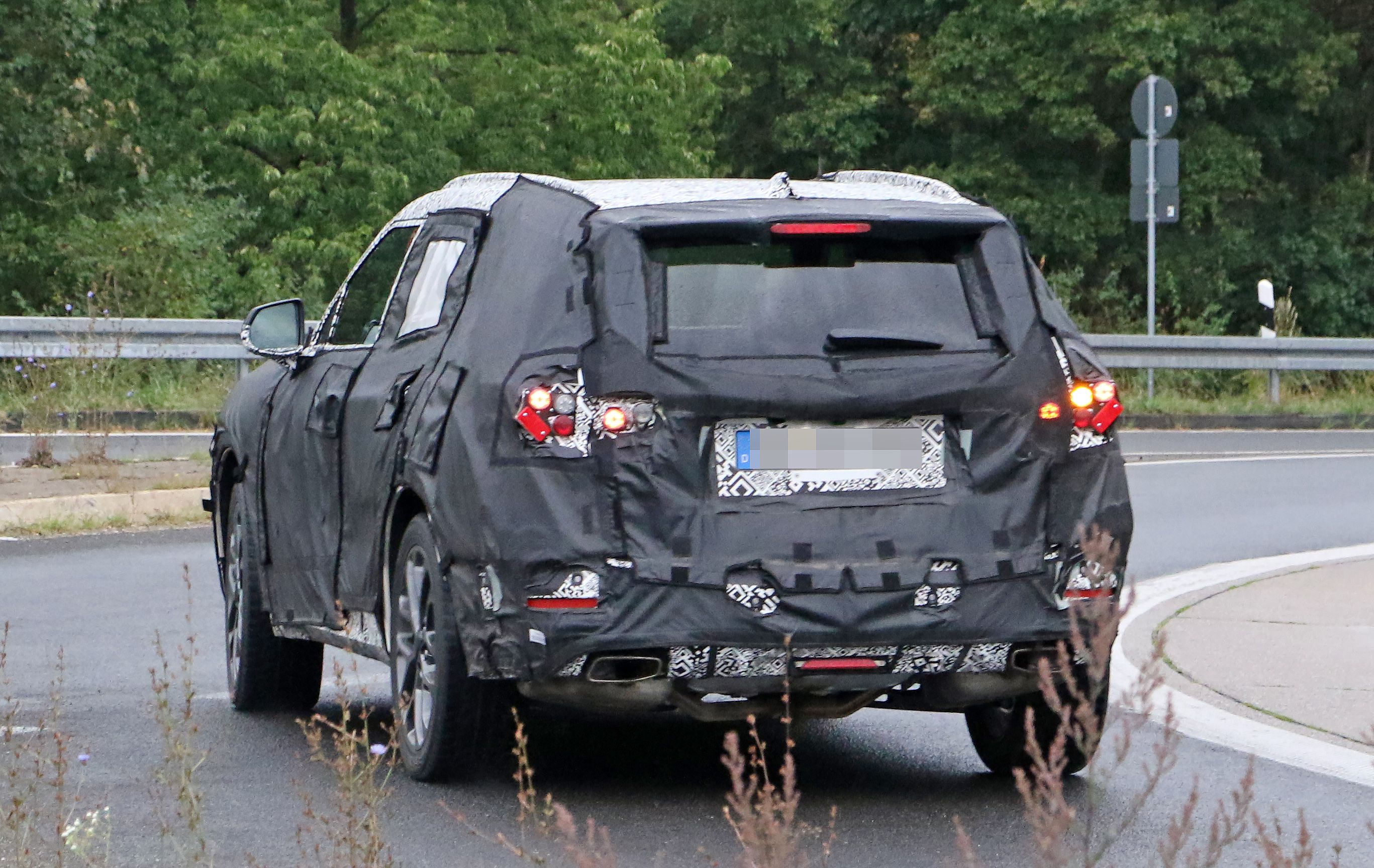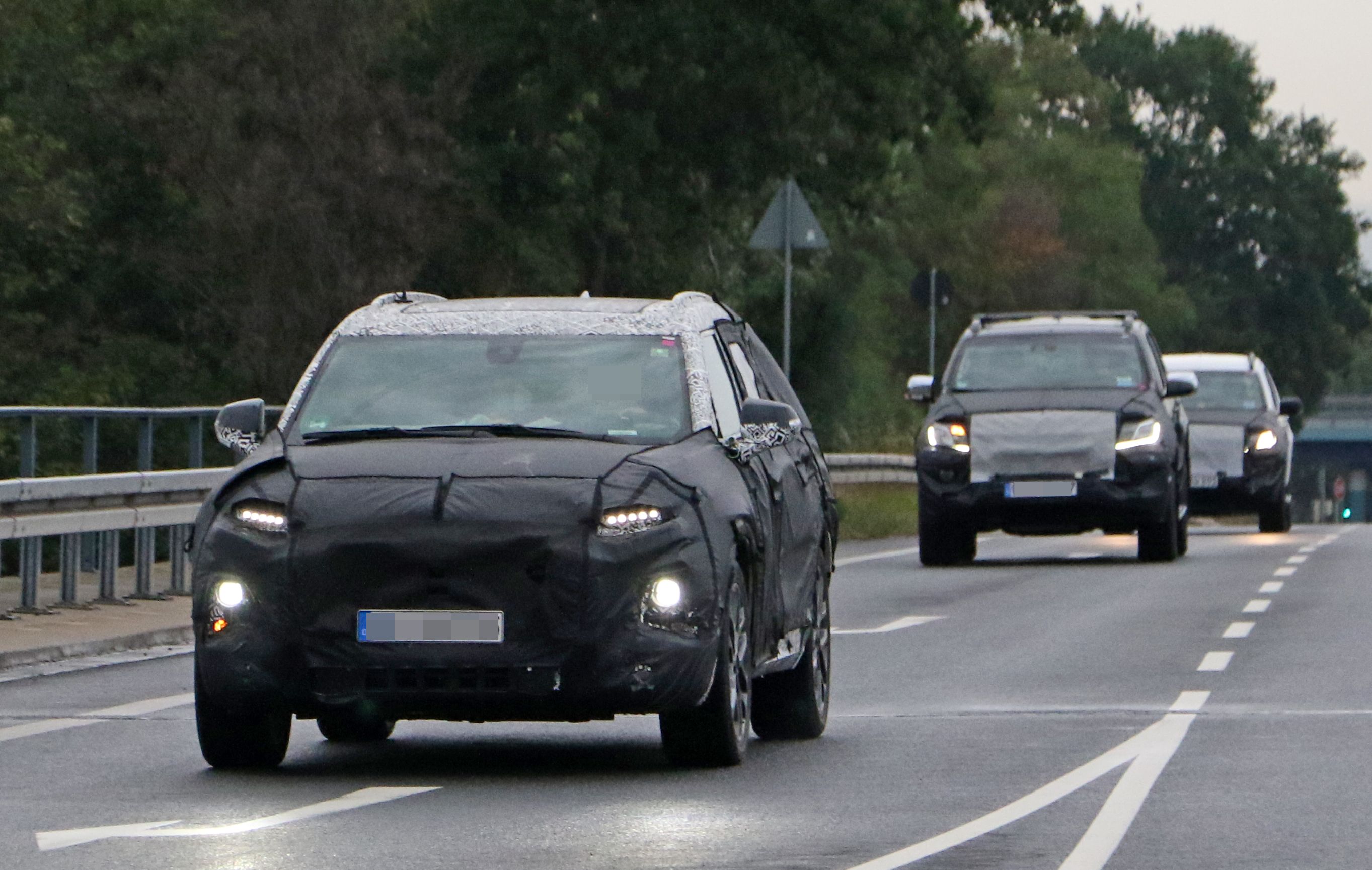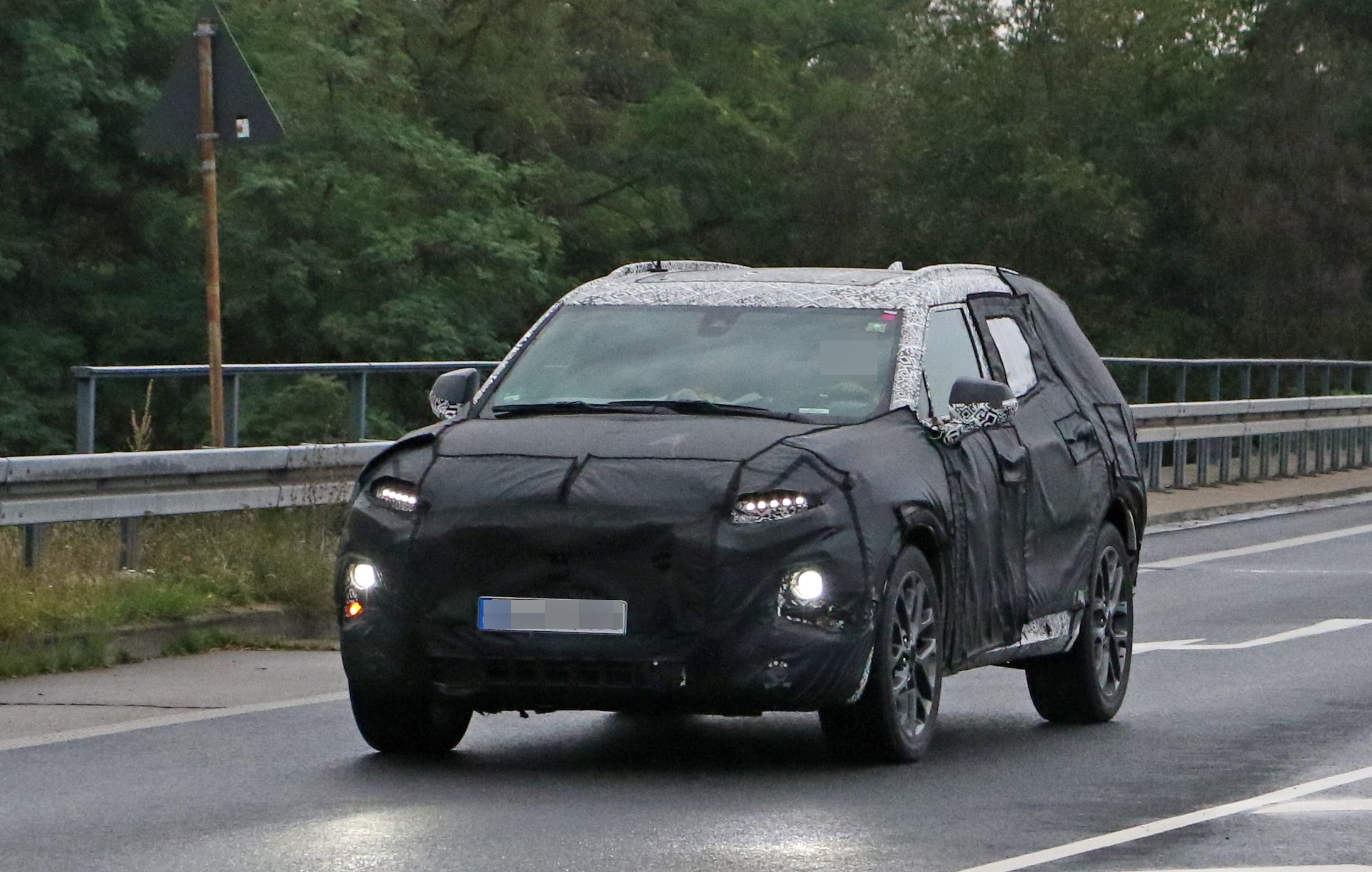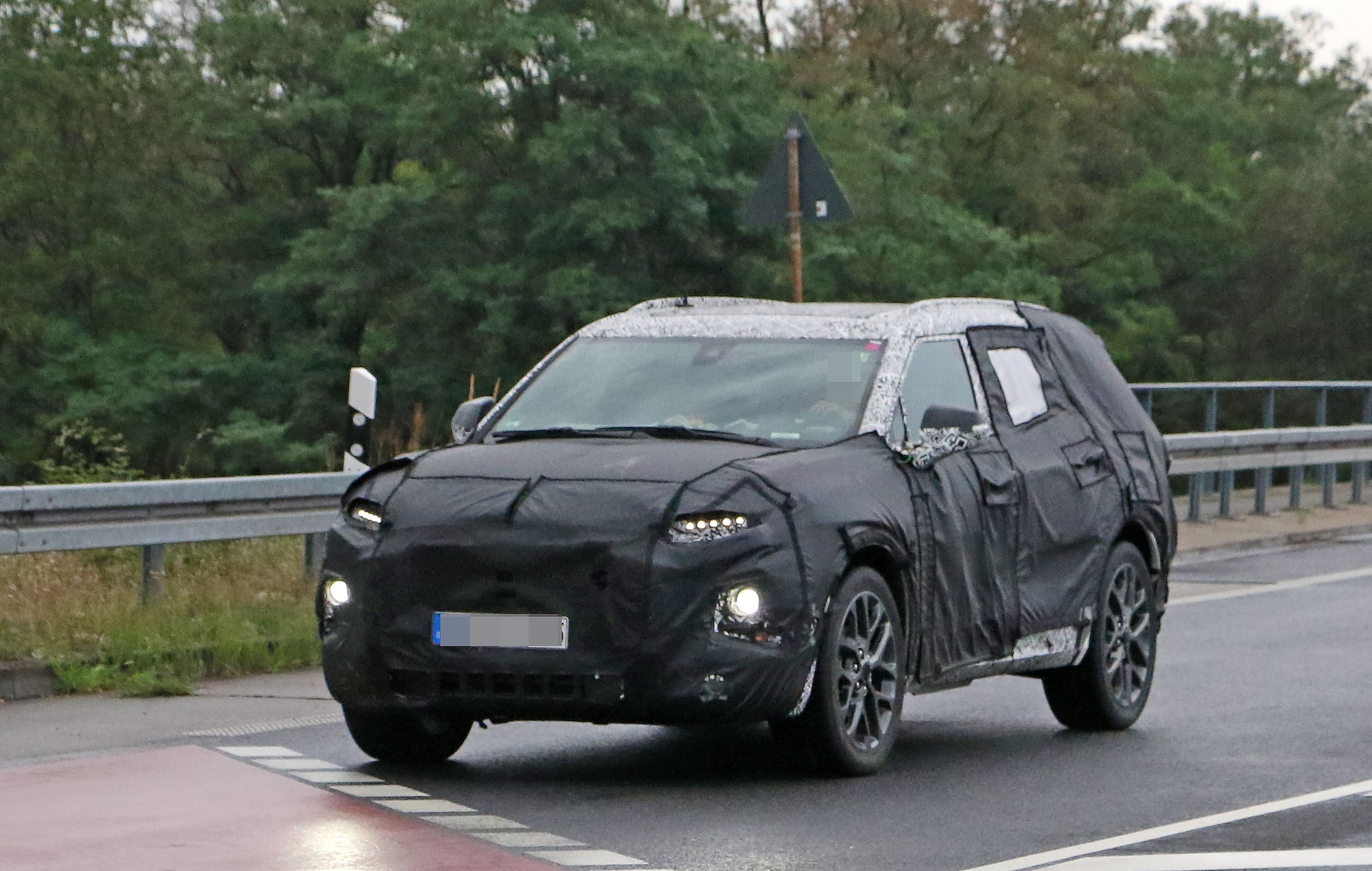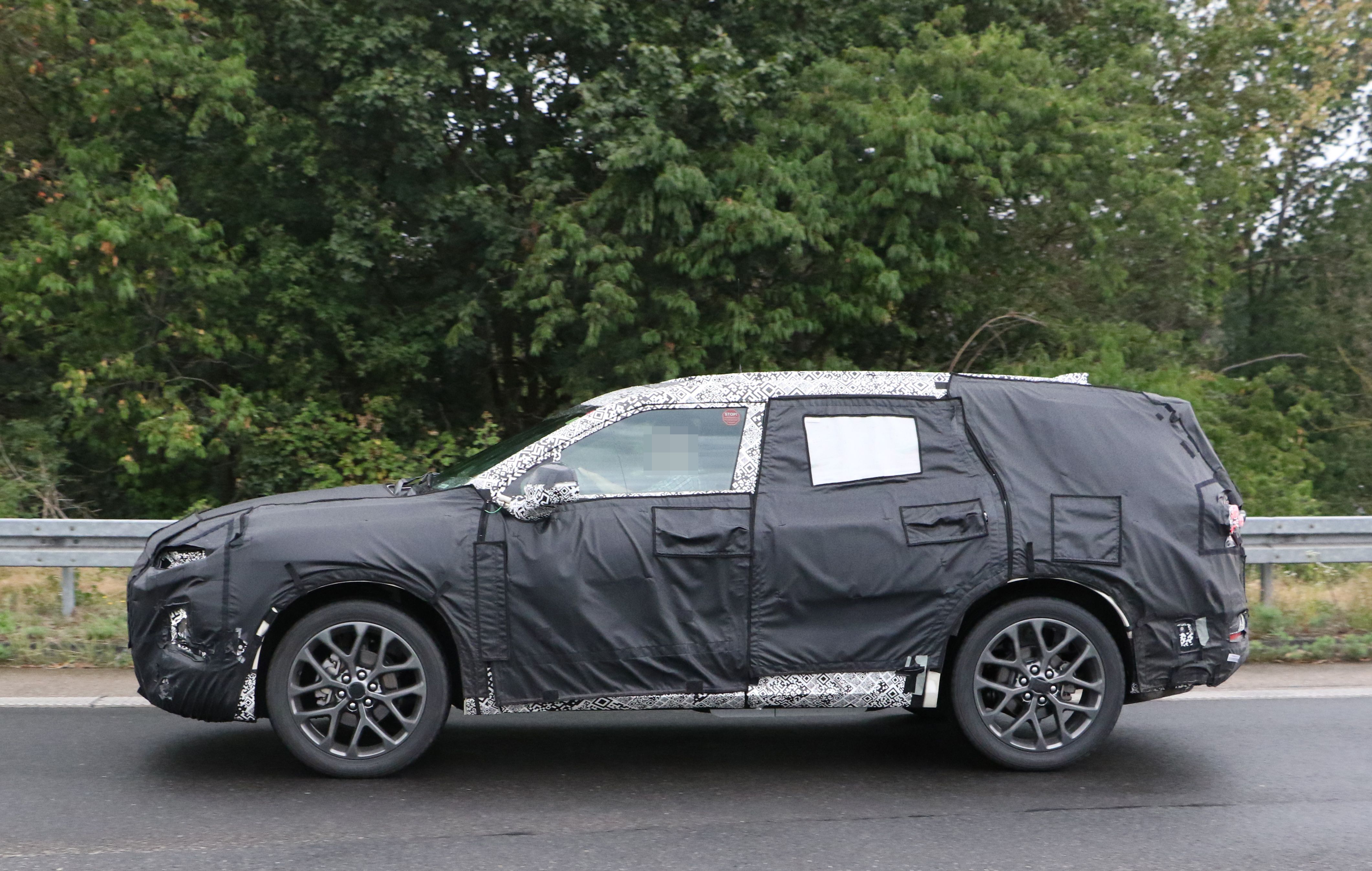The Chevrolet Blazer XL is an upcoming variant of the 2019 Chevrolet Blazer. Introduced in 2018, the 2019 Blazer is a midsize crossover that revived the iconic nameplate after a 13-year absence and slots between the Equinox and the Traverse in the lineup. The Blazer XL is essentially a longer version of the standard SUV. Spotted testing with heavy camouflage on its body, the Blazer XL will likely debut in 2020.
Word has it that the longer Blazer was developed mainly for the Chinese market, where customers favor vehicles with longer wheelbases. But since the prototype was spotted in Germany, the Blazer XL might make it to Europe as well. South America is yet another growing market that will see the Blazer XL debut in 2020. Although this SUV is scheduled to cross the pond to the United States as well, the fact that it's going to be built in China might be an issue for Chevy due to America's import tariffs on Chinese products.
2021 Chevrolet Blazer XL
- Make: Array
- Model: 2021 Chevrolet Blazer XL
- [do not use] Vehicle Model: Array
Exterior
As you might have already guessed, the Blazer XL will be identical to its standard sibling up front. Although camouflaged, the prototype appears to have the exact same design. The Blazer's front end is heavily influenced by the latest Camaro, and it's highly controversial among Chevy fans. But while some don't like its frowning appearance, some, me included, dig the aggressive look with the extremely thin headlamps, the slim upper grille, and the massive grille below. We can also see the same trapezoidal foglamps surrounds with the angled base through the bumper wrap.
The profile of the SUV also looks familiar, but only from the nose to the B-pillar. This area is copied and pasted from the regular Blazer. However, the crossover looks a bit different toward the back. One of the Blazer's trademark features is the lower window line that ascends from the C-pillar toward the D-pillar, forming a really small and almost triangular quarter window. This design cue isn't visible here, but it could be camouflaged. The black wrap mounted on the rear door is shaped differently, but I can't tell whether Chevy redesigned the rear doors or it's just a trick to give us the impression of a notably redesigned profile.
To be honest, it could happen. Some Chinese versions of familiar vehicles have different designs in China, and the Blazer XL might not be an exception from this rule. A closer look also reveals a revised rear section. Obviously, the XL is longer than its standard sibling. But instead of having a longer wheelbase -- it seems similar to the standard Blazer here -- the XL has an elongated rear end and a longer rear overhang. The Blazer's slanted rear window seems to be gone here, replaced by an almost vertical one for a boxier look. The sexy, angled D-pillar of the regular crossover also appears to have been removed, but it's difficult to tell due to the camouflage.
All told, the Blazer XL seems to have a more rugged profile with a boxy rear section for enhanced luggage space and a more traditional look. I'm sure SUV enthusiasts will appreciate the changes, but it remains to be seen how the boxy rear end fits with the aggressive, Camaro-inspired front fascia.
The rear end is so heavily camouflaged that's impossible to notice the actual shapes and features. The taillights are of the prototype variety with round lights instead of the usual LED layout. The thick camo glued to the tailgate suggests that the XL may still have a slightly slated rear window, while the two-piece taillights indicate that the Blazer's standard lights may carry over. While the tailpipes are identical to the regular Blazer, the red lights in the bumper have been moved toward the corners. An additional lights adorns the center of the lower bumper, a feature we don't find on the U.S. blazer.
Interior
The interior of the Blazer XL should be identical to the regular Blazer for the most part. And that's good news because the Blazer's sporty exterior design trickles into the cabin. The interior is also inspired by the Camaro, featuring a similar infotainment screen and round A/C vents. A horizontal trim piece that extends from the dash just under the display separates the upper and lower sections. This element, which extends to the instrument cluster and into the passenger side also features contrast stitching and metal trim for a premium look.
The center stack sports two more A/C vents in the middle, while some of the car’s controls have been placed in a really thin strip above. This design results in a somewhat clean layout. Two big cup holders are placed on the right side of the center console that also features the gear shifter and the infotainment controller. Both the shifter and the controller are placed closer to the driver, while the cupholders are closer to the passenger seat.
Upholstery options should remain similar, so expect many colors and trims, as well as a padded knee area in the front. The options list should also include a panoramic power sunroof, a heated steering wheel, and heated/ventilated front seats. The range-topping Premier trim will include these features as standard, alongside heated outboard rear seats, Adaptive Cruise Control, Rear Camera Mirror, and a hands-free power liftgate. Wireless charging will optional no matter the model, just like on the regular Blazer.
The Blazer XL will also feature the electronic-locking glove box that Chevy debuted in the regular crossover. Big enough to fit a small handbag, the box is locked in Valet Mode for extra security.
The automatic heated steering wheel and front seats work with Remote Start and the climate control system to automatically adjust temperatures. The comfort-open windows are activated by the key fob to roll down and help cool the car before the passengers enter the vehicle. Further options include Hitch Guidance, which helps align the Blazer’s hitch to a trailer by showing the centerline on the rear-vision camera. Hitch View complements these features by showing a top-down view of the rear.
The eight-inch color touchscreen runs the Chevrolet Infotainment 3 operating system and includes 4G LTE wi-fi, Apple CarPlay, and Android Auto compatibility, so you'll be connected no matter the device.
Arguably the biggest change in the XL will be the seating layout. While the Blazer can seat up to five people, the Blazer XL will have a seven-seat capacity with two extra seats in the third row. The longer rear end means that Chevy will be able to provide decent space for third-row passengers, while also allowing some luggage room behind it. Expect this space to be smaller than the regular Blazer.
Space should increase to match that of the Blazer with the third-row seats folded flat. There's no official rating for the Blazer, but the XL should benefit from a few extra cubic feet. With the second-row folded flat as well, the XL should beat the Blazer's 64.2-cubic-foot capacity. Expect the XL to take more than 70 cubic feet of cargo and narrow the difference between the regular Blazer and the Traverse.
The SUV should also feature Chevrolet's relatively new cargo management system with rail and cargo fence. This feature will be optional, though.
Drivetrain
The standard Blazer comes with a choice of two gasoline engines, and it's safe to assume that the XL will feature both of them.
The entry-level engine is a 2.5-liter four-cylinder unit. Shares with trucks and SUVs like the Chevrolet Colorado, GMC Canyon, and GMC Acadia, this four-banger cranks out 193 horsepower and 188 pound-feet of torque. Although it's not impressively powerful, this mill provides the best fuel economy for the SUV.
Those looking for more oomph will get it from the 3.6-liter V-6 engine. Also shared with small Chevrolet and GMC trucks, as well as the Cadillac CT5, this engine generates a more appealing 305 horsepower and 269 pound-feet of torque.
Both engines are fitted with stop/start technology as standard. This feature shuts off the drivetrain when power is not needed in order to save fuel. A nine-speed automatic transmission is paired to these engines as standard.
Being an SUV developed primarily for the Chinese market, the Blazer XL could feature a different engine in its home market. The unit in question is a turbocharged, 2.0-liter four-cylinder known as the LSY. Part of the Ecotec family, it debuted in 2018 in the Cadillac CT6 and XT4 and expanded to the CT5 and XT5, as well as the GMC Acadia for the 2020 model year. The mill generates 237 horsepower in the Cadillacs and 230 horses in the Acadia. Most likely it will be identical to GMC's, which also generates 258 pound-feet of torque.
There's also the possibility that Chevy will go with the LTG version of this engine, which is already available in China in vehicles like the Cadillac XT5, Buick GL8, and Chevrolet Equinox. This engine generates between 250 and 279 horsepower, but Chevy might go with the 260-horsepower version in the Buick GL8.
Either way, Chinese customers will get a turbo engine that will sit exactly between the 2.5-liter four-banger and the 3.6-liter V-8.
Every trim of the Blazer XL will come standard with Traction Select, a feature that enables the driver to make adjustments to the vehicle’s driving mode for various road conditions. On models with all-wheel-drive, the system can disconnect from the rear axle, turning the Blazer into a FWD vehicle when AWD capability is not necessary. The more expensive RS and Premier models will feature a unique AWD system with twin-clutch technology. The latter helps optimize traction for wet, snowy, and icy conditions, while also improving stability on dry roads.
Chevrolet Blazer specifications
|
Engine |
2.5-Liter Four-Cylinder |
3.6-Liter V-6 |
|---|---|---|
|
Transmission |
Nine-Speed Auto |
Nine-Speed Auto |
|
Driveline |
FWD or AWD |
FWD or AWD |
|
Horsepower |
193 @ 6,300 rpm |
308 @ 6,600 rpm |
|
Torque |
188 lb-ft @ 4,400 rpm |
270 lb-ft @ 5,000 rpm |
|
Curb Weight |
3,805 lbs |
4,007 lbs |
|
Fuel Economy (mpg) |
22 City \ 27 Highway |
20 City \ 26 Highway |
|
Fuel Tank Capacity |
19.4 Gallons |
19.4 Gallons |
|
Max Towing Capacity |
1,500 lbs |
4,500 lbs |
|
0-60 mph |
8.2 seconds (est) |
6.1 seconds |
|
Top Speed |
120 mph (est) |
130 mph (est) |
Prices
Once it goes on sale in China, the Blazer XL will become Chevy's largest SUV in the country. It will slot above the Tracker and Equinox, and it will also become the most expensive. In the U.S., the Blazer is some 21-percent more expensive than the Equinox, and a similar premium could happen in China as well. The China-spec Equinox starts from CNY174,900 (around $24,810 as of August 2019), so the Blazer XL should cost at least CNY210,000 before options (about $29,790). Since it's a bit larger than the standard Blazer, the XL could come in at around CNY230,000 (around $32,600).
If it comes to the U.S., the Blazer XL will cost a bit more than the regular version. With the Blazer priced from $28,800, the XL will cost at least $30,000. This means that the XL will be more expensive than the Traverse, Chevy's current midsize, eight-seat SUV. And this is the main reason why the Blazer XL won't make it to North America unless Chevy decides to replace the Traverse altogether.
Competition
Ford Explorer
The Explorer is one of the Blazer XL's main rival in China. Built by Chevy's main competitor globally, the sixth-generation Explorer was unveiled in 2019 with a fresh design and state-of-the-art technology. It's also more powerful than ever, featuring a 2.3-liter EcoBoost engine rated at 300 horsepower and 310 pound-feet of torque in the base model. Ford also offers an optional 3.0-liter EcoBoost V-6 that's good for 365 horsepower and 380 pound-feet of torque, while the Explorer ST comes with 400 horses and 415 pound-feet of torque. Needless to say, the Explorer is a much better proposition as far as output goes. There's a big issue with this SUV though. Because it's not built in China but imported from the U.S., the explorer starts from CNY412,800. That's $58,480 as of August 2018, almost twice as much as what the Blazer XL is expected to cost.
Read our full story on the 2020 Ford Explorer
Volkswagen Atlas
The Volkswagen Atlas is sold as the Teramont in China. And unlike the Explorer, it's built in China as well, so VW doesn't have to import it from the U.S., where it's made in Chattanooga, Tennessee. The Teramont is a fairly new vehicle, having been introduced in 2017 as a replacement for the Touareg in many markets. The German SUV is available with two gasoline engine, starting with a 2.0-liter four-cylinder rated at 235 horsepower and 258 pound-feet of torque. The range-topping model comes with a 3.6-liter V-6 that cranks out 276 horses and 266 pound-feet of twist. Both are offered in China. The Teramont starts from CNY308,900, or roughly $43,750. That's more than the Chevy Blazer XL, but notably less than the Ford Explorer.
Read our full review of the 2019 Volkswagen Atlas
Conclusion
The Blazer XL is an interesting addition to the lineup that might bring more customers into Chevy's Chinese dealerships. However, the elongated Blazer might not be a suitable option for the U.S. market, where Chevy already offers a similar SUV in the Traverse. The Blazer XL might replace the latter in a few years, but we won't know more until the crossover breaks cover in China in 2020. Stay tuned for updates.
Further reading
Read our full driven review on the 2019 Chevrolet Blazer.
Read our full review on the 2019 Chevrolet Blazer.

